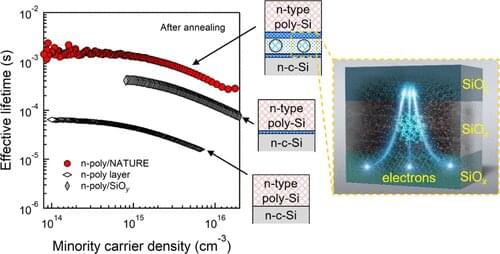As Russia moves toward a highly censored and tightly controlled internet amid its invasion of Ukraine, citizens are finding ways to bypass restrictions.



March 16 (Reuters) — Telecoms giant Verizon Communications Inc (VZ.N) said on Wednesday it had secured new business worth almost $1 billion from the U.S. Department of Defense to provide technical support and network modernization services.
The deal includes contracts for services to the Pentagon, the National Capital Region (NCR) and Fort Belvoir at a combined value of $966.5 million.
Verizon will provide internet-protocol-based services, voice and video services and network-related support aimed at accelerating the department’s digital pivot.


China captured a spy tool deployed by the US National Security Agency, which is capable of lurking in a victim’s computer to access sensitive information and was found to have controlled global internet equipment and stole large amounts of users’ information, according to a report the Global Times obtained from the National Computer Virus Emergency Response Center exclusively on Monday.
According to the report, the Trojan horse, “NOPEN,” is a remote control tool for Unix/Linux computer systems. It is mainly used for stealing files, accessing systems, redirecting network communication, and viewing a target device’s information.
Through technical analysis, the center believes that the “NOPEN” Trojan horse is characterized by complex technology, comprehensive functions and strong concealment, which can fit a variety of processor architectures and operating systems. It can also collaborate with other cyber weapons and is a typical tool used for cyber espionage.

SpaceX drone ship Just Read The Instructions (JRTI) has departed Port Canaveral in anticipation of the company’s sixth consecutive Starlink launch.
Known as Starlink 4–12, the mission will be SpaceX’s sixth uninterrupted Starlink launch – just shy of the company’s record of seven Starlink launches between commercial payloads. Though SpaceX would probably prefer to avoid month-long streaks without commercial launches, the company’s ability to use its own launch capabilities to deploy its Starlink constellation means that it can maintain valuable economies of scale while simultaneously launching satellites that generate some revenue.
With approximately 200,000 active subscribers, Starlink should already be generating around ~$250 million in annual revenue – perhaps enough to pay for anywhere from five to ten Starlink launches. Viewed another way, $250M would also pay the average annual salaries of more than 2,300 employees. Even if it doesn’t come close to the $1–2 billion SpaceX is likely spending annually on Starlink development, deployment, and operations, it’s still better than the alternative that all other launch providers are left with: nothing.



In the future, decarbonized societies that use internet of things (IoT) devices will become commonplace. But to achieve this, we need to first realize highly efficient and stable sources of renewable energy. Solar cells are considered a promising option, but their electrical contacts suffer from a “tradeoff” relationship between surface passivation and conductivity. Recently, researchers from Japan have developed a new type of electrical contact that can overcome this problem.
The most recent type of commercial photovoltaic cell (solar cell) uses stacked layers of crystalline silicon (c-Si) and an ultrathin layer of silicon oxide (SiOx) to form an electrical contact. The SiOx is used as a “passivating” film—an unreactive layer that improves the performance, reliability, and stability of the device. But that does not mean that simply increasing the thickness of this passivating layer will lead to improved solar cells. SiOx is an electrical insulator and there is a trade-off relationship between passivation and the conductivity of the electrical contact in solar cells.
In a new study, published in ACS Applied Nano Materials, a research team led by Assistant Professor Kazuhiro Gotoh and Professor Noritaka Usami from Nagoya University has developed a novel SiOx layer that simultaneously allows high passivation and improved conductivity. Named NAnocrystalling Transport path in Ultrathin dielectrics for REinforcing passivating contact (NATURE contact), the new electrical contact consists of three-layer structures made up of a layer of silicon nanoparticles sandwiched between two layers of oxygen-rich SiOx. “You can think of a passivating film as a big wall with gates in it. In the NATURE contact, the big wall is the SiOx layer and the gates are Si nanocrystals,” explains Dr. Gotoh.

SpaceX has reflown a converted Falcon Heavy side booster just 37 days after its first mission as a Falcon 9 rocket, successfully delivering a batch of Starlink satellites to low Earth orbit (LEO) in the process.
Booster B1052 first flew in April 2019 as part of Falcon Heavy Block 5’s launch debut. The same side core was reused two and a half months later in June 2019 but was then unceremoniously ushered into an unknown warehouse. Despite earlier statements from CEO Elon Musk indicating that new Block 5 Falcon Heavy side boosters could be quickly and easily converted into Falcon 9 boosters, B1052 remained mothballed in storage for the better part of two and a half years. Only in December 2021 – almost 30 months after its last launch – did the former Falcon Heavy side core finally reappear in the form of a Falcon 9 booster.
A month and a half later, on January 31st, Falcon 9 B1052 debuted with the flawless launch of Italy’s CSG-2 Earth observation satellite, subsequently becoming the first SpaceX booster of any kind to complete three back-to-back ‘return-to-launch-site’ landings.

Is Metaverse a boom or a bubble?
There is hardly a day that goes by without a mention of the metaverse. Since Facebook’s brand name changed to Meta, the word has really caught on and everybody wants to be a part of it.
Mark Zuckerberg may have drawn the world’s attention to the metaverse but the digital world has been on the rise for quite some time. Minecraft, an online game, has been around since 2011, where not only does one get to stay in a digital world but also has the tools to build it around themselves. With their versions of the metaverse, what Meta and the others now want to do, is build up these worlds rapidly, so that people can just come and spend their time in there. ## Time is Money.
If there is one thing the internet and the millions of apps have taught us once again is that time is money. The amount of time a user is willing to spend on your site or app is directly proportional to the amount of money you can make since you now have the user’s attention.
Since the metaverse promises a host of things to do in a three-dimensional space, companies want to occupy prime properties in the metaverse to showcase their products and services, much like the Times Square in New York. As of now, there are limited places that have the potential to be Times Square of the metaverse and they belong to companies like The Sandbox, Decentraland, Cryptovoxels, and Somnium Space who own the real estate in their digital worlds.
Full Story: